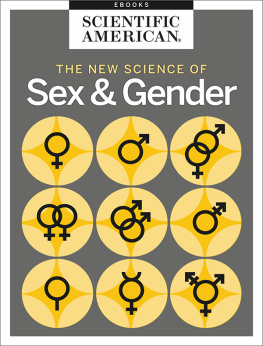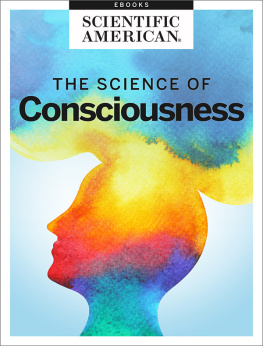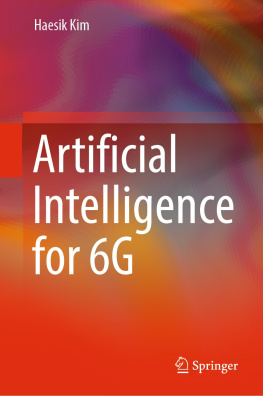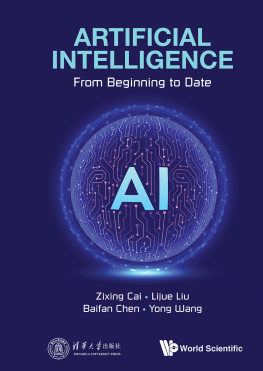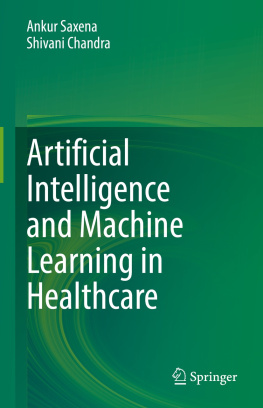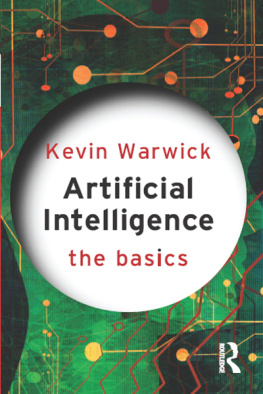Editors of Scientific American - Understanding Artificial Intelligence
Here you can read online Editors of Scientific American - Understanding Artificial Intelligence full text of the book (entire story) in english for free. Download pdf and epub, get meaning, cover and reviews about this ebook. year: 2002, publisher: Grand Central Publishing, genre: Computer. Description of the work, (preface) as well as reviews are available. Best literature library LitArk.com created for fans of good reading and offers a wide selection of genres:
Romance novel
Science fiction
Adventure
Detective
Science
History
Home and family
Prose
Art
Politics
Computer
Non-fiction
Religion
Business
Children
Humor
Choose a favorite category and find really read worthwhile books. Enjoy immersion in the world of imagination, feel the emotions of the characters or learn something new for yourself, make an fascinating discovery.

- Book:Understanding Artificial Intelligence
- Author:
- Publisher:Grand Central Publishing
- Genre:
- Year:2002
- Rating:4 / 5
- Favourites:Add to favourites
- Your mark:
- 80
- 1
- 2
- 3
- 4
- 5
Understanding Artificial Intelligence: summary, description and annotation
We offer to read an annotation, description, summary or preface (depends on what the author of the book "Understanding Artificial Intelligence" wrote himself). If you haven't found the necessary information about the book — write in the comments, we will try to find it.
Editors of Scientific American: author's other books
Who wrote Understanding Artificial Intelligence? Find out the surname, the name of the author of the book and a list of all author's works by series.
Understanding Artificial Intelligence — read online for free the complete book (whole text) full work
Below is the text of the book, divided by pages. System saving the place of the last page read, allows you to conveniently read the book "Understanding Artificial Intelligence" online for free, without having to search again every time where you left off. Put a bookmark, and you can go to the page where you finished reading at any time.
Font size:
Interval:
Bookmark:
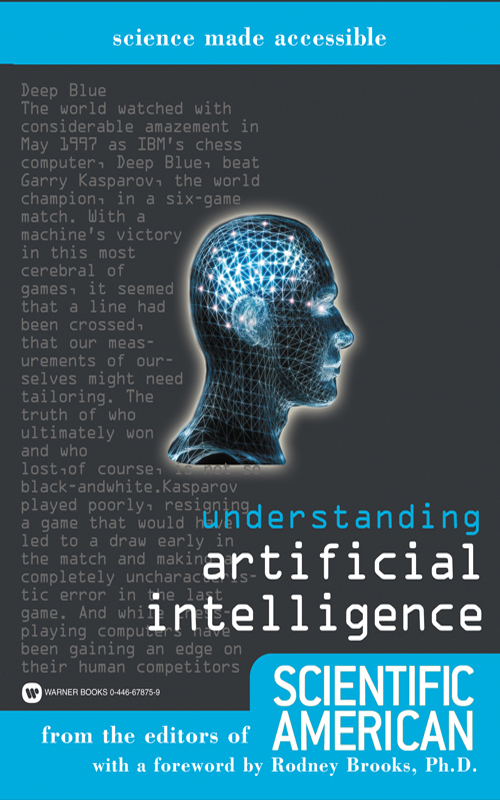
Copyright 2002 by Scientific American, Inc., and Byron Preiss Visual Publications, Inc. All rights reserved.
The following essays first appeared in the pages of Scientific American magazine, as follows: On Computational Wings: Rethinking the Goals of Artificial Intelligence by Kenneth M. Ford and Patrick J. Hayes, 1998; 2001: A Scorecard by Gary Stix, January 2001; Artificial Intelligence by Douglas B. Lenat, September 1995; Fuzzy Logic by Bart Kosko, July 1993; How Neural Networks Learn from Experience by Geoffrey E, Hinton, September 1992;. Computing with Molecules by Mark A. Reed and James M. Tour, June 2000; Intelligent Materials by Craig A. Rogers, September 1995; The Coming Merging of Mind and Machine by Ray Kurzweil, Special Issue: Your Bionic Future; Rise of the Robots by Hans Moravec, December, 1999; Will Robots Inherit the Earth? by Marvin Minksy, October 1994; The Mastermind of Artificial Intelligence by John Horgan, November 1993.
Warner Books, Inc.,
Hachette Book Group
237 Park Avenue
New York, NY 10017
Visit our website at www.HachetteBookGroup.com.
First eBook Edition: June 2002
ISBN: 978-0-7595-2761-4
BUILDING A
NON-HUMAN
INTELLIGENCE
Rodney Brooks
S tarting with Alan Turing, artificial intelligence (AI) research has been a driving force behind much of computer science for over fifty years. Turing wanted to build a machine that was as intelligent as a human being since it was possible to build imitations of any small part of a man. He suggested that instead of producing accurate electrical models of nerves, a general-purpose computer could be used and the nervous system could be modeled as a computational system. He suggested that television cameras, microphones, loudspeakers, etc., could be used to model the rest of a humanoid body. This would be a tremendous undertaking of course, he acknowledged. Even so, Turing noted that the so constructed machine would still have no contact with food, sex, sport and many other things of interest to the human being. Turing concluded that in the 1940s the technical challenges to building such a robot were too great and that the best domains in which to explore the mechanization of thought were various games, and cryptoanalysis, in that they require little contact with the outside world. He explicitly worried about ever teaching a computer a natural human language as it seems however to depend rather too much on sense organs and locomotion to be feasible.
Turing thus set out the format for early artificial intelligence research, and in doing so touched on many of the issues that are still the points of hot debate in 2001, and which are discussed in many of the chapters of this book. Much of the motivation for artificial intelligence is the inspiration from people that they can walk, talk, see, think, and do.
How can we make machines that can do these things too?
The first issue to be resolved is whether people are somehow intrinsically different from machines. One side argues that just as we had to adapt to not living at the center of the universe, then had to adapt to having evolved from animals, now we will have to adapt to being no more special than complicated machines. Others argue that there is something special about being human and mere machines can never have the capabilities or the personhood of humans.
The second issue is whether our intelligence is something that can be emulated computationally. Some argue that the brain is an information-processing machine, made of meat, and as such can be replaced by a fast computer and Moores law is ensuring that we will have a fast enough computer within the next 20 years. Others argue that perhaps there is something non-computational going on inside our heads not necessarily anything that is beyond the understanding of current physics, but that the organization of whatever is going on is not yet understood even at a basic level.
The third issue is how the computation, or whatever it is, should be organized. Are we the product of rational thought, or are we rather dressed up animals, and the product of reactive brains programmed by evolution to fight or flee?
And the fourth issue is how to get all the necessary capabilities into a machine. Can they be explicitly written down as rules and be digested by a disembodied computer? Or, do we need to build robots with sensors and actuators that live in the world and learn what they need to know from their interactions with the world?
Finally there are speculations on where our work on AI will lead. Such speculations have been part of the field since its earliest days, and will continue to be part of the field. The details of the speculations usually turn out to be wrong, but the questions they raise are often profound and important, and are ones we all should think about.
Sandy Fritz
O f all the machines that have changed our lives, perhaps the most influential is the computer, the quintessential child of the industrial revolution. It is mass produced and easily available. It combines brilliant scientific insight with a product that improves the real world. The speed of its growth is astounding. Its refinement and improvement rides the very edge of scientific achievement. Computers can generate realistic images of dinosaurs on the run, defeat human chess champions, and serve as a humble hubs linking anybody in the world with the World Wide Web. Truly impressive.
But can it think? If a machine can think for itself on some level, perhaps even learn from and improve upon its performance through experience, it can be a far more useful tool. Just about everyone agrees this is a desirable thing, but how to get there is a whole other question.
One camp in the artificial intelligence field sees the human brain as a computer that can be copied to produce an artificial mind. Others argue that human behavior defies the strictures of a computer program. At the heart of this discussion lies the truly slippery question facing those who would fashion artificial intelligence: What does it mean to think? And its corollary: Does thinking constitute consciousness?
In the attempt to get computers to behave in a somewhat thinking/conscious manner, scientists have had to study human beings in a whole new light. It turns out that much of what we take for granted in the world that a dropped apple will fall to the ground or that rain makes things wet constitutes an invisible set of assumptions that form a backdrop to all human interactions with the world. Thus, before an intelligent robot maid can vacuum the floor, a mass of facts about the 3-D world the amount of pressure needed to remove dirt from a carpet; the difference between an ink stain and a black-and-white design, etc. must be coded and downloaded.
Human beings learn by integrating their sensory experiences of the world into patterns. We do it naturally, automatically, incorporating and cross-referencing thoughts, conversation and interactions with the world at large. A single interaction with an apple or a snowstorm or a car that wont start brings us reams of new information about the world processed without conscious effort and seamlessly integrated with what we already know to create a better, broader understanding.
Neural networks, designed to promote and create AI, approach the experience-learning-new information-integration problem by modeling the biology of the human nervous system. These vastly simplified networks show promise, but the computing cycles necessary to power them make complicated neural nets run slowly.
The speed breakthrough that foreshadows the jump to true AI may hinge in the switch from silicon memory to molecular memory (as made clear by Mark A. Reed and James M. Tour in Computing with Molecules). Combine that with the ability of molecules to function as switches and other products of nanotechnology, and the accompanying increase in processing power could set the stage for AIs grand show: the intelligent robot.
Font size:
Interval:
Bookmark:
Similar books «Understanding Artificial Intelligence»
Look at similar books to Understanding Artificial Intelligence. We have selected literature similar in name and meaning in the hope of providing readers with more options to find new, interesting, not yet read works.
Discussion, reviews of the book Understanding Artificial Intelligence and just readers' own opinions. Leave your comments, write what you think about the work, its meaning or the main characters. Specify what exactly you liked and what you didn't like, and why you think so.

